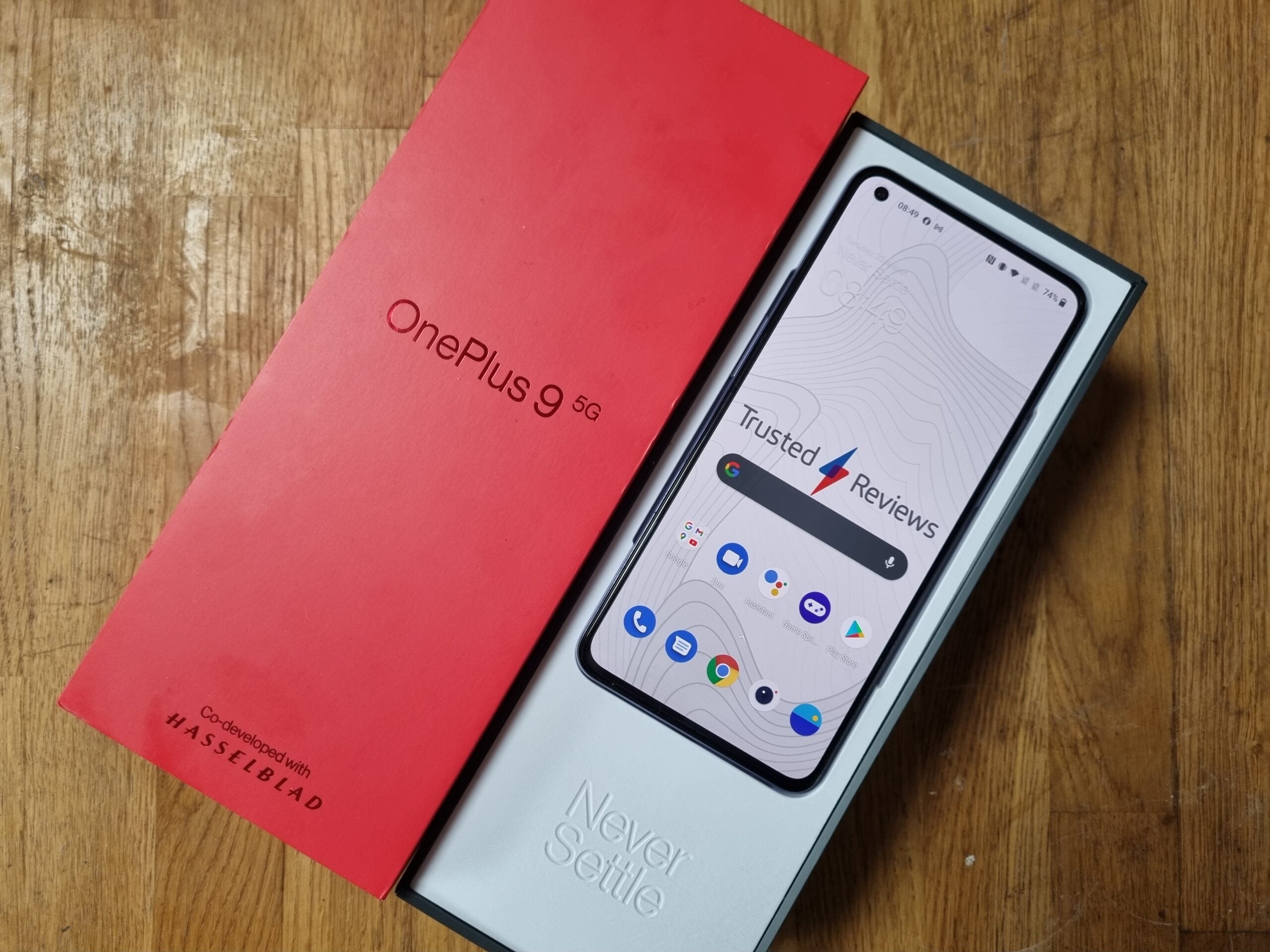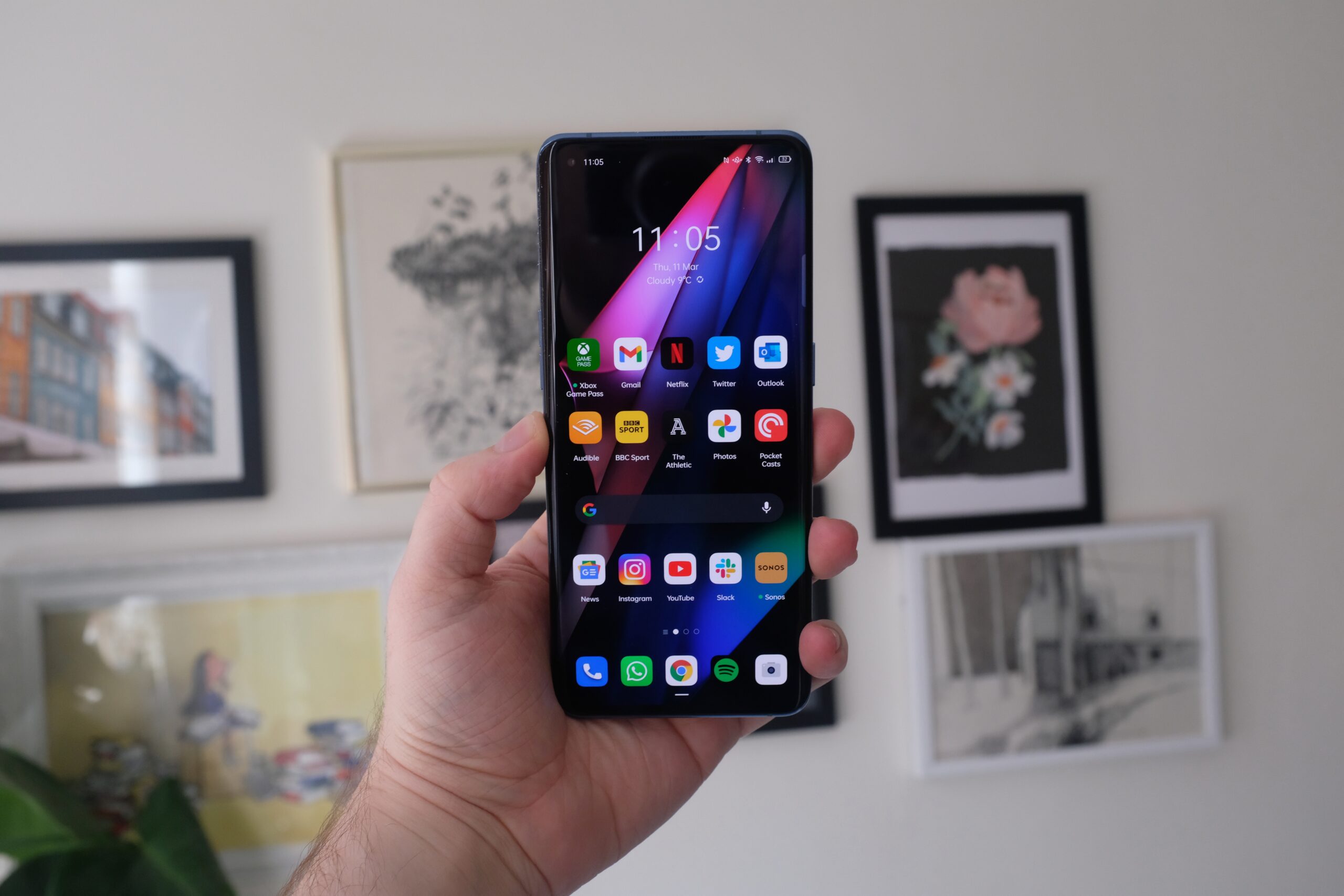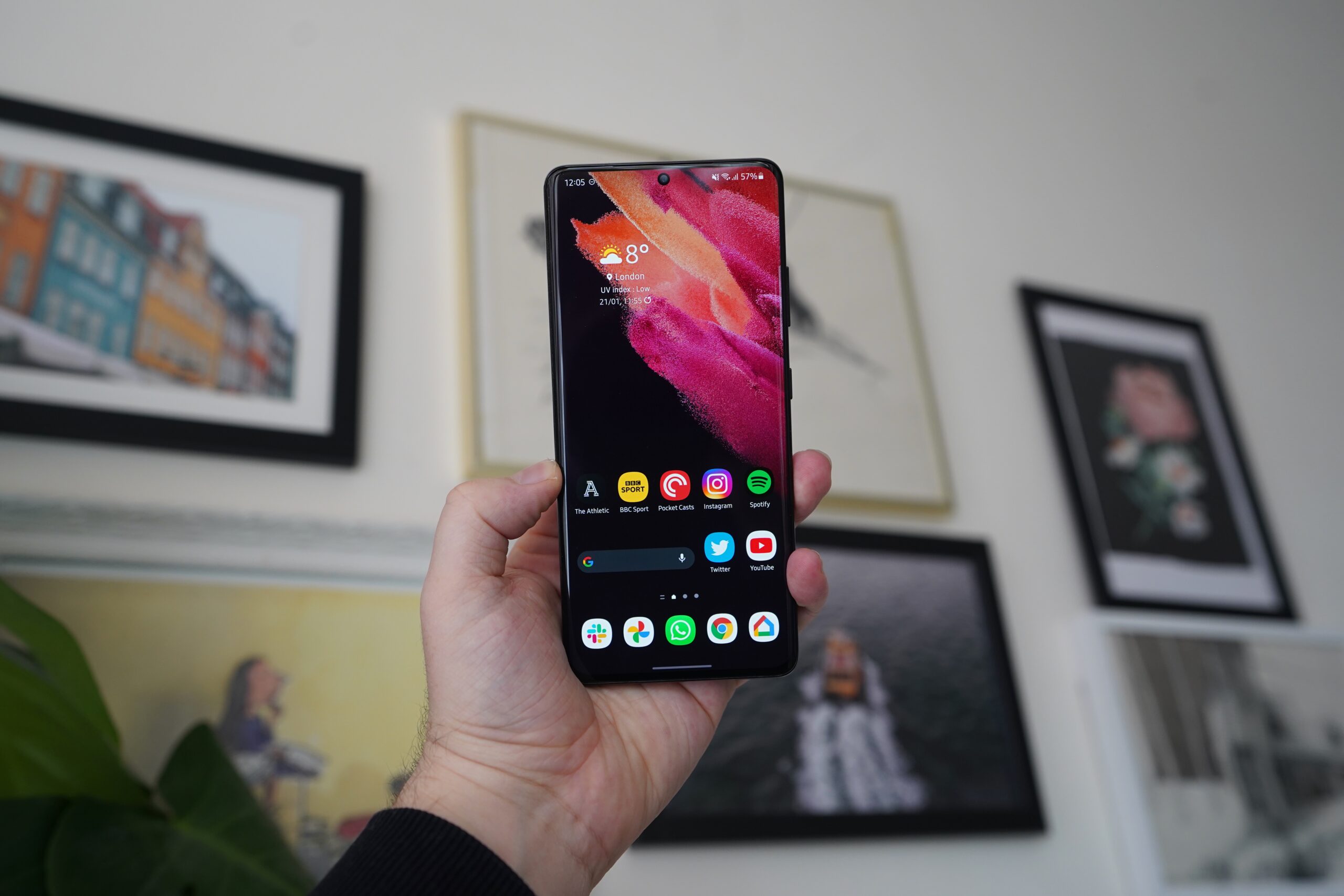Sony Xperia 1 II Review
Sony Xperia 1 II Review
Sony's best in years
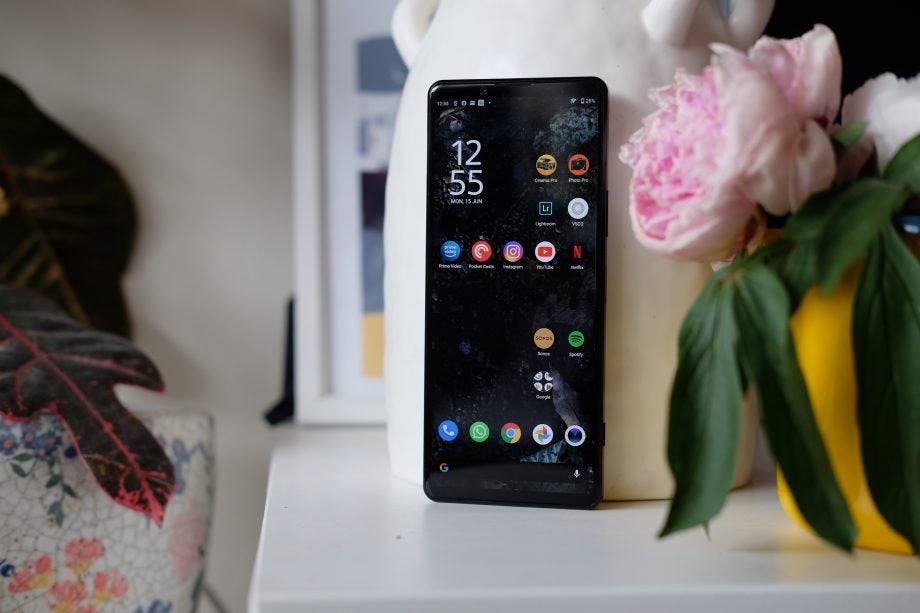
Verdict
It packs a nice design, plenty of clever touches (headphone port on a flagship feels almost novel at the point) and great software. Save for the £1000/$1000 price, this is Sony’s best phone for a number of years.
Pros
- Fast focussing
- A lovely screen
- Great manual camera apps
Cons
- Very expensive, especially compared to what else is on the market
- Other phones take better pictures in auto mode
Key Specifications
- Review Price: £1099
- 6.5-inch 4K HDR OLED 21:9 display
- Snapdragon 865, 8GB RAM
- 4000mAh battery
- 3 x 12-megapixel rear cameras
- Alpha camera apps
- 256GB storage
The Sony Xperia 1 II is Sony’s best phone in years. It takes inspiration from some of the brand’s biggest products and melds them into a phone that feels very different from the usual Android competition.
With the 4K OLED display that takes some skills from the Bravia line to the Alpha-inspired triple camera array, this is a Sony phone through-and-through.
But are these features simply tacking on a well-known brand for the sake of it? Or do they make for a winning combination?
Design and Screen
- Can display certain content in 4K
- Tall 21:9 display
- Plenty of customisation options for playing back video
Sony isn’t rewriting the rulebook when it comes to phone design with the Xperia 1 II. The boxy rectangle and 21:9 display lead to a very tall phone, however it’s narrower and easier to clutch than, say, the iPhone 11 Pro Max. You will need to stretch your thumb a bit to reach the top of the screen, unless you want to utilise the handy one-handed mode.
You’ll find the headphone jack on the top, the fingerprint-sensing power button on the side and the SIM tray on the opposite side. This SIM tray just pulls out without the need for a tool; handy if you change SIMS or SD cards on the regular. It’s IP68-rated for water resistance too and is one of the few phones to keep the multi-press camera shutter button around.
I know lots of people appreciate this shutter button, but its positioning means my thumb often accidentally rests on it when I am holding the phone.
While it’s a very clean phone to look at, I would have preferred a matte back finish rather than the smudgy glass in play here.
The Sony Xperia 1 II is one of the best phones around when it comes to the display, at least on paper and if you’re a fan of watching lots media, be it Netflix or YouTube, on your phone then there is lots here to get you excited.
It remains the only phone out there with a 6.5-inch 4K screen, boasting HDR 10-bit colour support and an OLED panel. It also eschews the notch completely – giving you an uninterrupted 21:9 display that is properly immersive.
One spec you will notice is missing from the bumper list is a 90 or 120Hz panel – a feature common on just about every other 2020 flagship, especially those that cost as much as this. Now, Sony has introduced some motion smoothing tricks which can give the impression of a faster refresh rate in certain instances, however it’s not as successful as a true 120Hz panel.
So, is 4K a worthy replacement for this faster panel? I do like how Sony is doing things differently here and not following the usual mold set by other Android phones. I don’t say this often very but the Xperia 1 II feels unique, and the 4K display is part of that attraction. In usual day-to-day use, I doubt you’ll notice the extra pixels and that’s whether you’re coming from a phone with a quad-HD display or even 1080p.
Fire up a YouTube video that is uploaded at full 2160p resolution and you do notice the extra clarity and sharpness over the competition. For most people, the difference will be minimal – but for those who this phone is aimed at will appreciate it. I do wish apps like Netflix, Prime Video and Play Movies would let me use all the resolution possible, as at the minute they seem to max out at 1080p. HDR is supported in Netflix though, and content looks great.
The other slight quirk about this display is the tall 21:9 aspect ratio. This is great for content shot at this size, movies for instance and lots of Netflix originals, yet it’s not so good for 16:9 or 18:9 stuff. You’ll want to stretch most videos out to avoid black bars either side of the screen. I have found most apps work fine, with games like Call of Duty mobile making extra use of the screen real-estate.
Resolution is only one thing and a good display requites plenty of other traits. Thankfully the Xperia 1 II impresses here too. The CineAlta ‘Creator Mode’ aims to give you a better representation of content, supporting 10-bit colour and the BT.2020 colour gamut. Brightness levels are good too, even when you’re using the phone in sunlight.
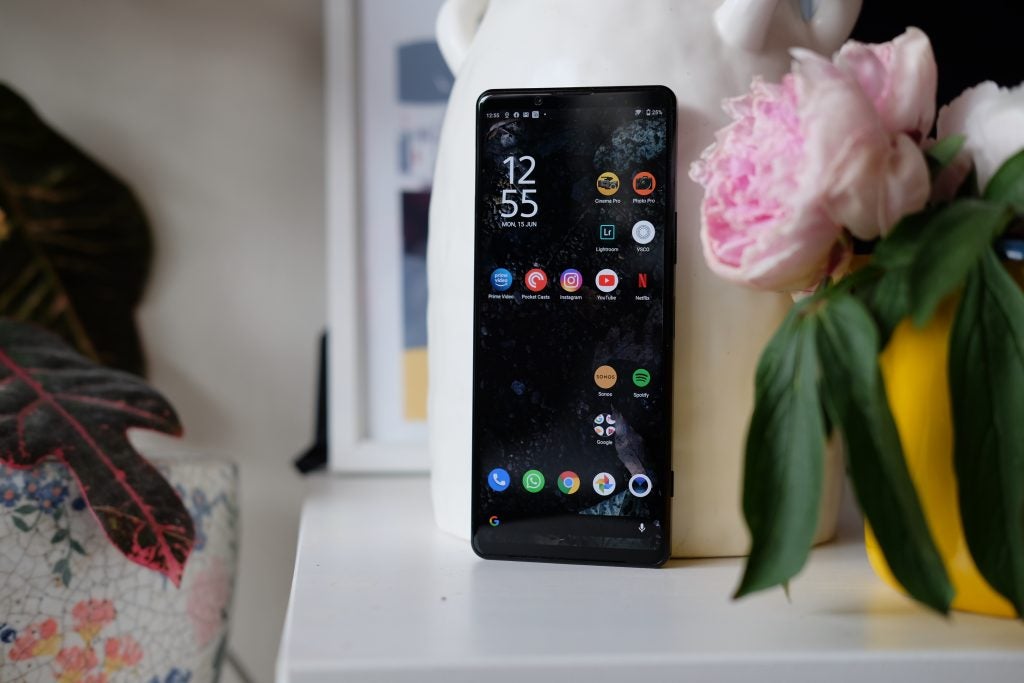
Performance
- Snapdragon 865 chipset
- That is paired with 8GB RAM and 256GB storage
- Excellent audio performance
Like any worthy Android flagship in 2020, the Xperia 1 II has the Snapdragon 865 5G at its heart. That’s paired with 8GB RAM and 256GB storage. Once again, Sony signals its target audience by deciding to give us more storage, rather than a little more RAM. That decision is fine by me and the 8GB feels more than adequate.
This is a fast phone, though the lack of the 90Hz display means it doesn’t feel quite as slick as the OnePlus 8 Pro or Samsung Galaxy S20. Still, it can handle anything you throw at it: from games at the full graphical setting to any app from Google Play.
Audio performance is excellent here too, once again showing just how good this is as a media machine. You’ve got a 3.5mm headphone port and stereo front-firing speakers that sound terrific with noticeable bass and loads of volume. Dolby Atmos is supported, as is Hi-Res audio and Bluetooth 5.1.
Sony’s software has often felt hamstrung in the past, focussing on needless extras and forcing the brand’s own apps throughout. That’s not so much the case anymore as the software here is very much Google’s own vision for Android. There are a few Sony extras of course, but most of these add to the experience rather than detract from it.
There are two distinct Sony apps: Cinema Pro and Photo Pro. Both of these bring features from the brand’s incredibly popular range of Alpha cameras to give you more control over video and photos respectively.
Camera
- UI similar to Sony’s Alpha cameras
- Three rear cameras
- Lots of manual options
Those two dedicated camera apps give the Sony Xperia 1 II another unique advantage. Shooting with this phone feels more like taking snaps and capturing video with an actual camera than any other phone on the best camera phones list. If you’re familiar with the Alpha cameras and in particular its UI then you’ll feel right at home here. These apps give you greater control; bringing manual options to the forefront and easier to get at.
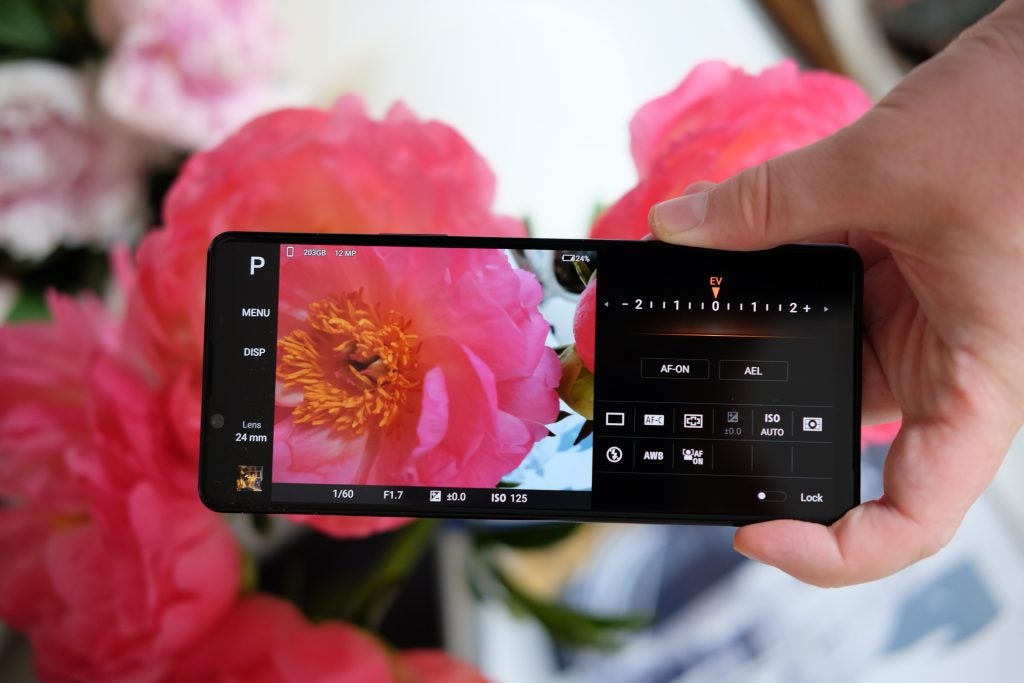
If you use these controls to their fullest you can capture some excellent snaps with the Xperia 1 II. But getting the best picture isn’t quite as easy as it is on some of the competition – you need to work a bit harder to get the most out of it.
There are three cameras on the back, all of which use a 12-megapixel sensor. You’ve got the main wide camera with a 24mm focal length and an f/1.7 lens along with larger 1.8um pixels – these make the sensor here 50% more sensitive than the Xperia 1.
Paired with that is an excellent f/2.4 70mm telephoto (for comparison, the tele on the iPhone 11 Pro is a mere 53mm) and an f/2.2 16mm ultra wide. It’s a versatile setup and one that forgoes high-megapixel counts. It also lacks any sort of periscope zoom, a feature often found on competing devices you’ll find at this price.
That’s not to say Sony has decided against adding any new tech here. Once again dipping into its Alpha arsenal with real-time eye AF tracking for both humans and animals. This does an eerily excellent job of focusing on the eye and it really does work. Sony says this can carry out 60 calculations per second to let you shoot 20 fps. This sort of thing would likely be unavailable if the sensors here packed similar amounts of megapixel to the Samsung Galaxy S20 Ultra.
You can capture some really great snaps from all three of the cameras. Colours are accurate, the post-processing feels a lot less aggressive and, of course, focussing is very snappy. Maybe I would like to see low light shots look a little less noisy, but if you’re willing to play around with the manual mode then that’s one of my few criticisms.
Video capture is impressive too – with the same caveats. You can shoot 4K HDR content at 21:9 and 60fps and there’s a load of really nice looking colour presets that add to that cinematic feel.
Battery life
The 4000mAh battery inside the Xperia 1 II is a little on the small side. It’s smaller than that in the Galaxy S20 after all and that doesn’t have all these pixels to push.
The regular 60Hz refresh rate does offset the drain somewhat and you can easily make it through the day. I don’t think this will be a multi-day phone for many heavy users, even if my usage has changed somewhat with the current lockdown.
Sony always seems to manage to get more juice out of a battery than you’d expect, so I would be really interested to see what an Xperia with a 5000mAh cell could achieve.
A full charge takes about 90 minutes and you can get to 50% in 30 if you’re using a suitable charger. Wireless charging is here and is always a welcome feature.
You should buy it if…
You want a flagship with a headphone jack
Very few high-specced flagship phones still ship with 3.5mm headphone jacks, meaning you’re restricted to wireless cans and making sure you’ve got a dingle handy. The Xperia 1 II has such a port and wide range of supported audio codecs.
You love watching content on a phone
This is a phone made for watching videos. There’s 4K support, HDR and the wide 21:9 panel is ideal for movies.
You’re an Alpha camera user
Sony has brought much of the DNA from its Alpha camera series to the camera app here and if you’re a fan of those you’ll feel right at home.
You shouldn’t buy it if…
You’re after a 120Hz panel
The only thing missing from the display here is a true 120Hz mode giving everything a smoother feel. This effect instead is being achieved through software trickery and the results are a bit mixed.
FAQs
Sony assembles the Xperia 1 ii in Thailand
Announced in February 2020, the phone was released in May 2020
The Xperia 1 ii has an IP68 rating and can be submerged in 1.5m of water for 30m
Specs
How we test phones
We test every mobile phone we review thoroughly. We use industry standard tests to compare features properly and we use the phone as our main device over the review period. We’ll always tell you what we find and we never, ever, accept money to review a product.
Trusted Score
Jargon buster
USB-C
The modern USB connector you’ll find on most Android phones, new laptops, cameras and games consoles. It’s reversible and used for charging along with data-transfer.
mAh
An abbreviation for milliampere-hour and a way to express the capacity of batteries, especially smaller ones in phones. In most cases the higher the mAh, the longer the battery will last but this isn’t always the case.
OLED and AMOLED
Types of displays that use self-lighting pixels to provide greater contrast and more vibrant colours than a typical LCD display, as well as sharper blacks.
IP68
The most popular and useful level of water resistance. Usually means a device can withstand dust, dirt and sand and be submerged in 1.5m of water for 30m however this can sometimes vary. Read more in our IP68 guide for more.
Qi Wireless Charging
The most common format for wireless charging and the one supported by the majority of devices. Charge speeds vary a lot by the phone.
5G
Offering faster download and upload speeds when compared to 4G. Great for game streaming and HDR video playback. Not supported everywhere yet and speeds vary wildly.


